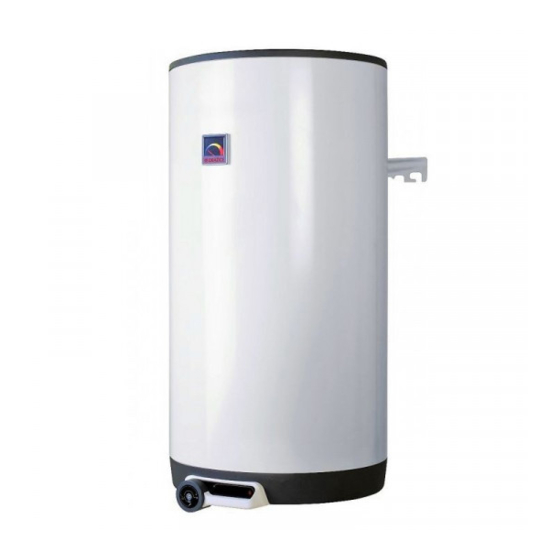2.5 CONNECTION OF INDIRECT HEATER TO HOT WATER SYSTEM
a) Water heating by electric energy
After the heater is connected to electric network, the heating element starts heating water. The element is
turned on and off by a thermostat. After reaching the temperature set, the thermostat switches off the
electric circuit and thus discontinues water heating. The control light signals if the element is in operation
(light is on) or if it is off (the light goes out). In case of longer operation without using the heated volume,
the thermostat has to be set to position 5°C to 8°C (set the "snowflake" symbol on the thermostat selector)
to avoid its freezing, or electricity supply to the heater has to be switched off. In combined versions, the
stop valve on the inlet to the exchanger has to be closed at the inlet to the heat exchanger which prevents
heating the water in the hot water heating system.
b) Service water heating via thermal energy through heat exchanger
Closing valves of the heat exchanger must be opened which ensures heating water flow from the hot water
heating system. Together with THE closing valve, it is recommended to install an air outlet valve at the inlet
to the heat exchanger in order to bleed the heat exchanger as needed, in particular before the beginning of
the heating season (Figure 3). The time it takes to heat up using the heat exchanger depends on the
temperature and flow of water in the hot water heating system. A combined heater is made in universal
design – depending on the need of connecting the closing valves to the heating element either from the
right, or from the left.
It is recommended to install stop valves on the heating water inlet and outlet (for possible
dismantling of the heater). The valves have to be as close to the heater as possible to avoid
higher thermal losses.
- 13 -

